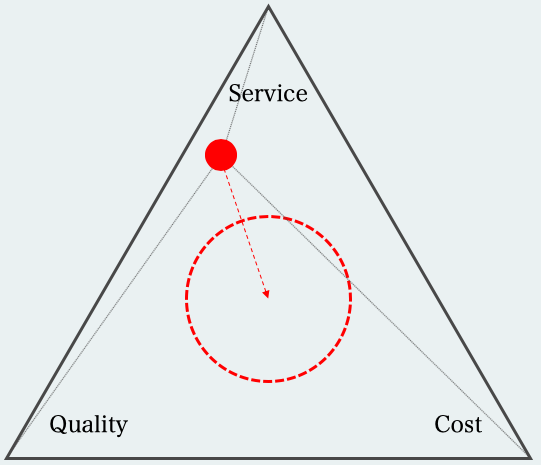What is Plan-led maintenance?
Imagine a Formula 1 car, racing into the pits, only for the tires not to be ready, or the wrong tires in place, or a person missing; it would doubtless be disastrous in such a margin-driven sport. Achieving the slick pit stops we see today didn’t ‘magically’ happen. They had a plan, have re-engineered their process, so that instructions and work, flow seamlessly through the task, allowing optimum efficiency. And after every race, performance reviews are conducted - to learn.
Although rail does not require the same micro-second accuracy, we need similar clarity of instructions and control. BPR, in our world is about adding a layer of sophistication into the pre-input planning process and ‘re-wiring’ the organisation to develop a workflow design whereby process and control engages your people more proactively in deploying maintenance, ultimately making it cost competitive.
We call this approach ‘Plan-led’ Maintenance.
Why Plan-led?
The primary prize for a plan-led organisation is more efficient and ultimately cheaper maintenance. Best described as moving from ‘service at any cost’ to ‘service at the right cost’.
Service at the right cost
Whilst safety considerations will always be in the forefront of decision-making; in the day-to-day operation at rail companies delivery takes precedence over almost everything. In practice this singular focus engenders a reactive approach to maintenance control, and this will rarely deliver cost competitiveness. This can, and does, lead to a short-term focus that is both costly and will be threatening service reliability in the longer-term. A plan-led approach balances this equation more maturely by providing the TOC with stronger control of maintenance.
Read our recent case study - Arriva UK Trains gain from plan-led efficiency programme
Is Plan-led an alternative to outsourcing your maintenance?
Maintenance to an operational TOC is a cost, the more efficiently controlled this cost is whilst delivering the service levels required, the better. This has in recent years led to a significant increase of outsourcing of maintenance, providing a stable and contractual barrier for the cost of maintenance; but this approach provides governance challenges and it reduces the TOC’s flexibility to increase or decrease service demand and routine stock allocation changes; and why we are starting to see an increasing application of the TSSSA approach in rail.
The aviation industry went through a similar cycle roughly 25 years ago, where there was a significant drive to outsource maintenance; essentially in a bid to control spiralling costs. Many maintenance contracts were let to manufacturers and third-party providers, in a similar manner to that presently observed in rail franchise bids. During this phase, what was realised was that outsourcing absolutely controlled the maintenance costs, but the hidden costs of keeping the maintenance line ‘fed’ at all times to avoid contractual penalties had unforeseen impacts on service with its associated cost and reputation implications. A hybrid version has emerged in the last 10 years where most airlines now have their own, but separately managed and controlled engineering businesses. These are stand-alone business units, with individual P&L which must return a profit. Operating in a competitive market place, charging the maintenance provided to the operator, whilst controlling internal costs. A critical success factor in this model is planning and being more plan-led; taking decisions less reactively, more in the future and ultimately more in control.
Is it an alternative? No, plan-led approach stimulates the data-driven information to make an informed decision about in or out-sourcing maintenance, and the level of manufacturer support desired, rather than an alternative to either.
EngPro Expertise in Plan-led process
We have extensive experience in helping organisations re-engineer processes in engineering maintenance to become a more efficient organisations. We have a small team of highly-professional experts in this field who have delivered similar improvement packages to several leading operators such as VTEC, Southeastern, Greater Anglia and Chiltern to name a few. We have provided insight reports for several others, including operators in aviation.
From experience of undertaking this in many organisations, there is not a one size fits all solution; this is due fleet size, commercial pressures and operational interfaces are different from TOC to TOC.
Our Approach
Collaboratively develop scope and deliverables
Baseline evaluation and analysis
Build a revised, streamlined model
Facilitate open challenge with key stakeholders
Provide implementation support
Educate your team in plan-led techniques
Coach in culture, reporting and behaviours



